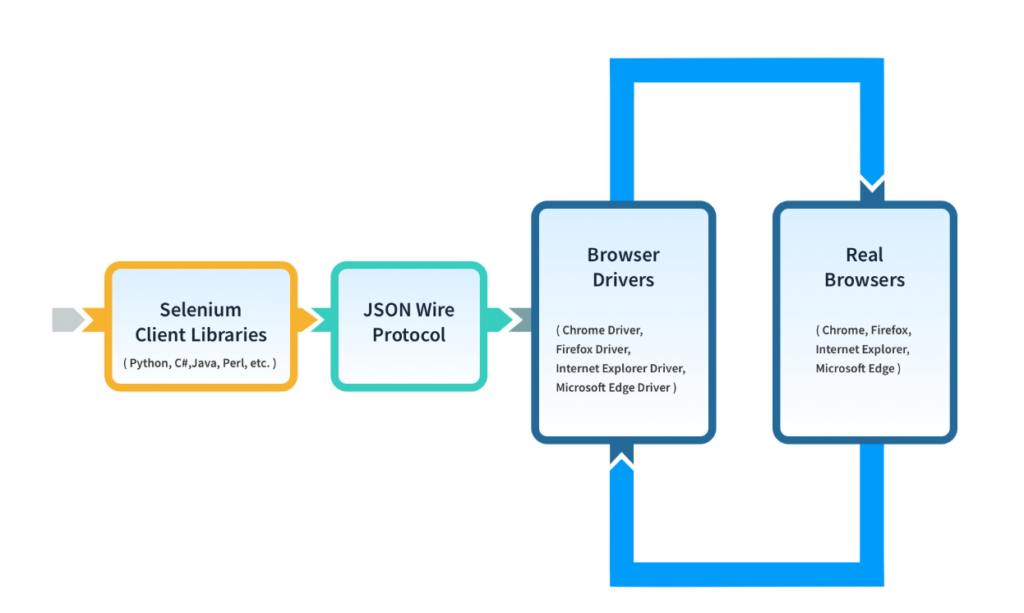Selenium works in client-server architecture.
Selenium has 4 main components:

- Developers of Selenium have developed these libraries corresponding to different languages
- To interact between client and server as shown above, we have JSON Wire Protocol. JSON Wire Protocol is a component that converts the request in such a way that is understood by the server and vice versa
- Drivers interact with real browsers. We want drivers as a middleware component from selenium because browsers do not want to expose their functionality/implementation to the third party
- And at the end we have real browsers
So as to understand the architecture of Selenium. Let’s consider a piece of code.
WebDriver driver = new ChromeDriver();
driver.get("https://google.com");- The above request is sent to JSON Wire Protocol. We also have selenium APIs which do some conversion and send to JSON Wire Protocol.
- Now JSON Wire Protocol has REST APIs which work over HTTP.
For every command in selenium there is a corresponding API in JSON Wire Protocol - The above REST API has a JSON format, and this goes as a URL to browser Drivers.
Every browser driver has its own HTTP server - Based on the information received by the drivers, drivers will interact with the real browsers
- Response is sent back from real browser back to console/language bindings.